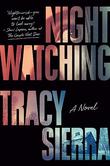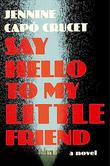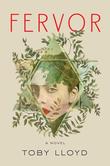
by Lindsey Fitzharris ‧ RELEASE DATE: June 7, 2022
An excellent biography of a genuine miracle worker.
Awards & Accolades
Our Verdict

GET IT
Kirkus Reviews'
Best Books Of 2022
Kirkus Prize
finalist
New York Times Bestseller
The author of The Butchering Art returns with “a new perspective on the terrible consequences of trench warfare, and the private battles that many men fought long after they put down their rifles.”
“Disfigured soldiers,” writes Fitzharris, “often suffered self-imposed isolation from society following their return from war.” While this has been true throughout history, the vast increase in military technology during World War I produced an avalanche of torn flesh and mutilated body parts that overwhelmed surgeons. Among more than 20 million injured, nearly 300,000 soldiers suffered facial trauma. In this often graphic yet inspiring, engaging book, the author focuses on Harold Gillies (1882-1960), a successful British ear, nose, and throat surgeon whose pioneering work in repairing faces places him among the war’s few true heroes. Sent to France early in the war, he observed freelance dental surgeons (the Royal Army Medical Corps had none) experimenting with facial reconstruction. He quickly established that the first principle of battlefield surgery—to close gaping wounds—was a disaster for jaw and facial injuries. Unless the damaged underlying structures were repaired first, the procedures guaranteed a grotesque end result. Returning to the Queen’s Hospital in London, Gillies persuaded the chief surgeon to establish a facial injury ward, which eventually grew to more than 1,000 beds and employed dozens of surgeon, dentists, artists, and sculptors who pioneered a new specialty: plastic surgery. The author’s case reports of individual soldiers are not for the faint of heart, but she delivers a consistently vivid account of the ingenious techniques involving skin flaps, grafting, reconstruction, and prostheses, most of which Gillies and colleagues invented. Many victims required dozens of painful procedures, and not all succeeded, but his accomplishments, along with his compassion, made him an object of worship from patients. A “genuine visionary in his field,” he received a good deal of favorable publicity in the media but only modest official recognition, including a knighthood in 1930, and he continued to practice until his death.
An excellent biography of a genuine miracle worker.Pub Date: June 7, 2022
ISBN: 978-0-374-28230-1
Page Count: 336
Publisher: Farrar, Straus and Giroux
Review Posted Online: April 5, 2022
Kirkus Reviews Issue: May 1, 2022
Share your opinion of this book
More by Lindsey Fitzharris
BOOK REVIEW
by Lindsey Fitzharris & Adrian Teal ; illustrated by Adrian Teal
BOOK REVIEW
More About This Book

by David Grann ‧ RELEASE DATE: April 18, 2017
Dogged original research and superb narrative skills come together in this gripping account of pitiless evil.
Awards & Accolades
Likes

21
Our Verdict

GET IT
Kirkus Reviews'
Best Books Of 2017
New York Times Bestseller
IndieBound Bestseller
National Book Award Finalist
Greed, depravity, and serial murder in 1920s Oklahoma.
During that time, enrolled members of the Osage Indian nation were among the wealthiest people per capita in the world. The rich oil fields beneath their reservation brought millions of dollars into the tribe annually, distributed to tribal members holding "headrights" that could not be bought or sold but only inherited. This vast wealth attracted the attention of unscrupulous whites who found ways to divert it to themselves by marrying Osage women or by having Osage declared legally incompetent so the whites could fleece them through the administration of their estates. For some, however, these deceptive tactics were not enough, and a plague of violent death—by shooting, poison, orchestrated automobile accident, and bombing—began to decimate the Osage in what they came to call the "Reign of Terror." Corrupt and incompetent law enforcement and judicial systems ensured that the perpetrators were never found or punished until the young J. Edgar Hoover saw cracking these cases as a means of burnishing the reputation of the newly professionalized FBI. Bestselling New Yorker staff writer Grann (The Devil and Sherlock Holmes: Tales of Murder, Madness, and Obsession, 2010, etc.) follows Special Agent Tom White and his assistants as they track the killers of one extended Osage family through a closed local culture of greed, bigotry, and lies in pursuit of protection for the survivors and justice for the dead. But he doesn't stop there; relying almost entirely on primary and unpublished sources, the author goes on to expose a web of conspiracy and corruption that extended far wider than even the FBI ever suspected. This page-turner surges forward with the pacing of a true-crime thriller, elevated by Grann's crisp and evocative prose and enhanced by dozens of period photographs.
Dogged original research and superb narrative skills come together in this gripping account of pitiless evil.Pub Date: April 18, 2017
ISBN: 978-0-385-53424-6
Page Count: 352
Publisher: Doubleday
Review Posted Online: Feb. 1, 2017
Kirkus Reviews Issue: Feb. 15, 2017
Share your opinion of this book
More by David Grann
BOOK REVIEW
by David Grann
BOOK REVIEW
by David Grann
BOOK REVIEW
by David Grann
More About This Book
BOOK TO SCREEN
BOOK TO SCREEN
BOOK TO SCREEN

by Elie Wiesel & translated by Marion Wiesel ‧ RELEASE DATE: Jan. 16, 2006
The author's youthfulness helps to assure the inevitable comparison with the Anne Frank diary although over and above the...
Elie Wiesel spent his early years in a small Transylvanian town as one of four children.
He was the only one of the family to survive what Francois Maurois, in his introduction, calls the "human holocaust" of the persecution of the Jews, which began with the restrictions, the singularization of the yellow star, the enclosure within the ghetto, and went on to the mass deportations to the ovens of Auschwitz and Buchenwald. There are unforgettable and horrifying scenes here in this spare and sombre memoir of this experience of the hanging of a child, of his first farewell with his father who leaves him an inheritance of a knife and a spoon, and of his last goodbye at Buchenwald his father's corpse is already cold let alone the long months of survival under unconscionable conditions.
Pub Date: Jan. 16, 2006
ISBN: 0374500010
Page Count: 120
Publisher: Hill & Wang
Review Posted Online: Oct. 7, 2011
Kirkus Reviews Issue: Jan. 15, 2006
Share your opinion of this book
More by Elie Wiesel
BOOK REVIEW
by Elie Wiesel ; edited by Alan Rosen
BOOK REVIEW
by Elie Wiesel ; illustrated by Mark Podwal
BOOK REVIEW
by Elie Wiesel ; translated by Marion Wiesel
© Copyright 2024 Kirkus Media LLC. All Rights Reserved.
Hey there, book lover.
We’re glad you found a book that interests you!
We can’t wait for you to join Kirkus!
It’s free and takes less than 10 seconds!
Already have an account? Log in.
OR
Trouble signing in? Retrieve credentials.
Welcome Back!
OR
Trouble signing in? Retrieve credentials.
Don’t fret. We’ll find you.





